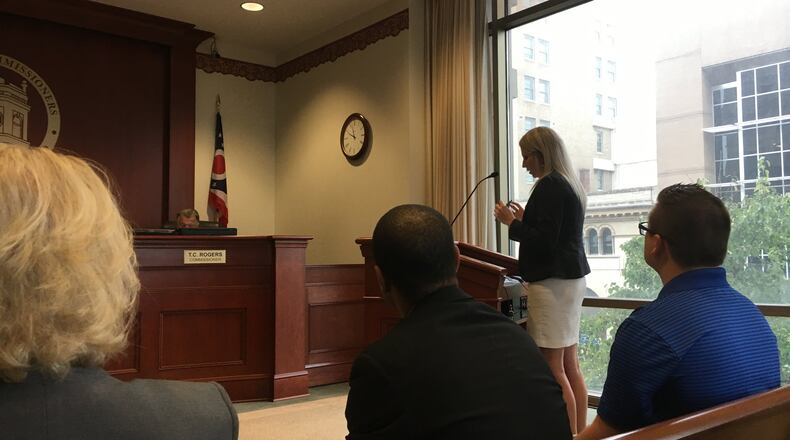County Administrator Charlie Young said when he started digging into the numbers he put the brakes on because the aggregate stop loss number was about $27.8 million — the insurance carrier picks up the costs for anything over that amount — and it appeared the county needed to reconsider its self-insured status.
“When we finally got to that ultimate realization that’s why things really stopped and we began to look at and ask ourselves is this really the kind of risk we should be taking,” Young told the Journal-News.
Commissioner T.C. Rogers said they started shopping around again and went back to the County Employee Benefits Consortium of Ohio (CEBCO) — their carrier before they went to self insurance last year — to see if they should return to full insurance coverage.
Rogers said when other companies heard they were looking several companies offered proposals, MMO and United Healthcare submitted reduced proposals that were a “virtual parity” — around $23.5 million in aggregate stop loss — and they have chosen to have further talks with United Healthcare.
Young said United Healthcare has a huge footprint in southern Ohio — MMO is headquartered in Cleveland — so he said they believe their employees would be more comfortable with that company.
Steffany Larkins, executive vice president and chief revenue officer for MMO, was disappointed.
“As noted publicly several weeks ago, we presented a compelling proposal to the county, showing a significant cost advantage, and were awarded the business,” she told this newspaper. “We are concerned and surprised that after the public bid process and the awarding of the contract to Medical Mutual, it appears our competitor was given information to revise their offer.”
RELATED: Commissioners have rare disagreement over health insurance carrier
The commissioners did not award a contract, they authorized Young to enter negotiations with MMO.
Commissioner Cindy Carpenter — the vote to start talks with MMO three weeks ago was an uncharacteristic 2 to 1 split — preferred United over MMO all along.
“I didn’t get the sense with the Medical Mutual presentation that they were employee-centered,” Carpenter said recently. “And I heard over and over again of the different ways that they cut costs by limiting services to the employees, so that is a big concern of mine. I want the employees to have what they have now, if not a better plan.”
Last year, the county went to a self-insurance model after several years of double-digit increases for insurance coverage. The prime mover behind the rate hikes were some large, once-in-a-lifetime claims over several years. There was a single $5 million claim in 2013 and a $3 million month in November 2014.
Last year the county had 19 claims top the stop-gap level — $175,000 for individual claims — compared to two in 2016.
Commissioner Don Dixon said self insurance gives them more control over the plan itself — they can tailor it to their employees’ needs — and future costs. With a consortium like CEBCO a good year claims-wise might result in a lower premium cost. By being self insured, if they have a drop in claims — both the number and amount of claims — that “could be millions of dollars less” because they are paying their own claims.
Dixon said there is also no penalty if they chose to non-renew with United Healthcare after the first year.
The commissioners also fired their provider Meritain, which quoted a 24-percent increase for 2019. The county has to pay a $50,912 penalty for cancelling the deal with Meritain early.
About the Author
